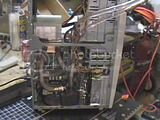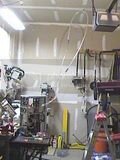- Joined
- Dec 14, 2006
Do you set up the loop with one end in a bath tub. And see how long it takes to pump the 100 L out of the tub though the loop and down the sink?
Or do you guys use a flow rate meter, and if you do which one links plz.
I just want to see what elbows, and NB water bocks do to the flow rate etc etc.
Or do you guys use a flow rate meter, and if you do which one links plz.
I just want to see what elbows, and NB water bocks do to the flow rate etc etc.

